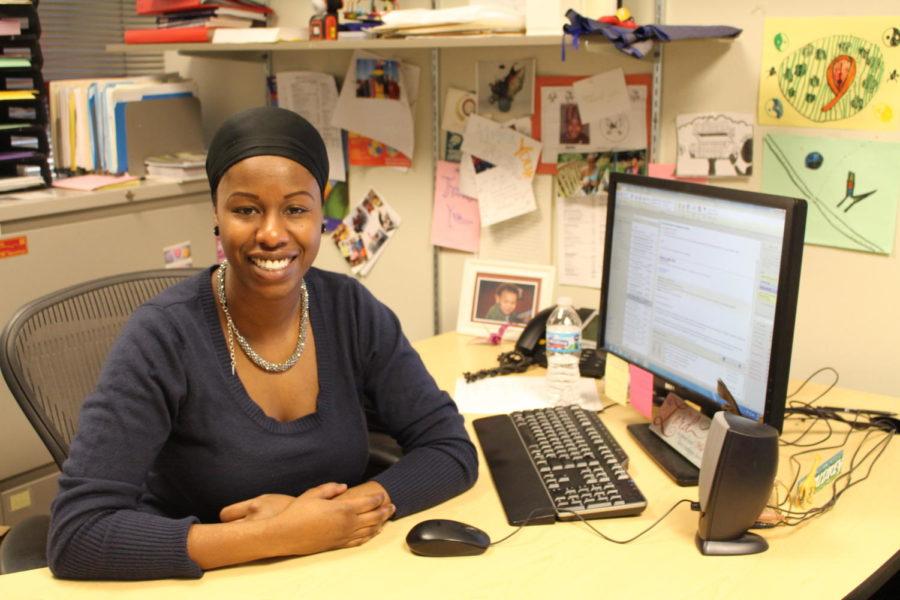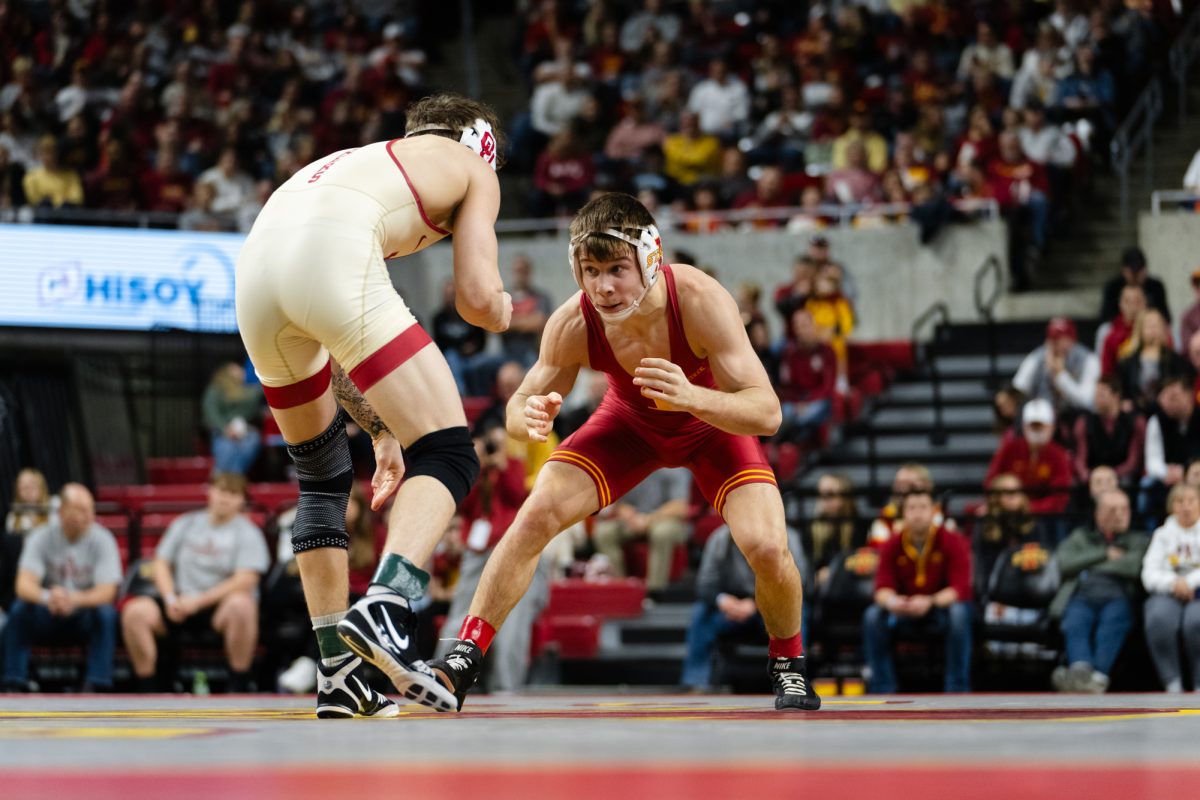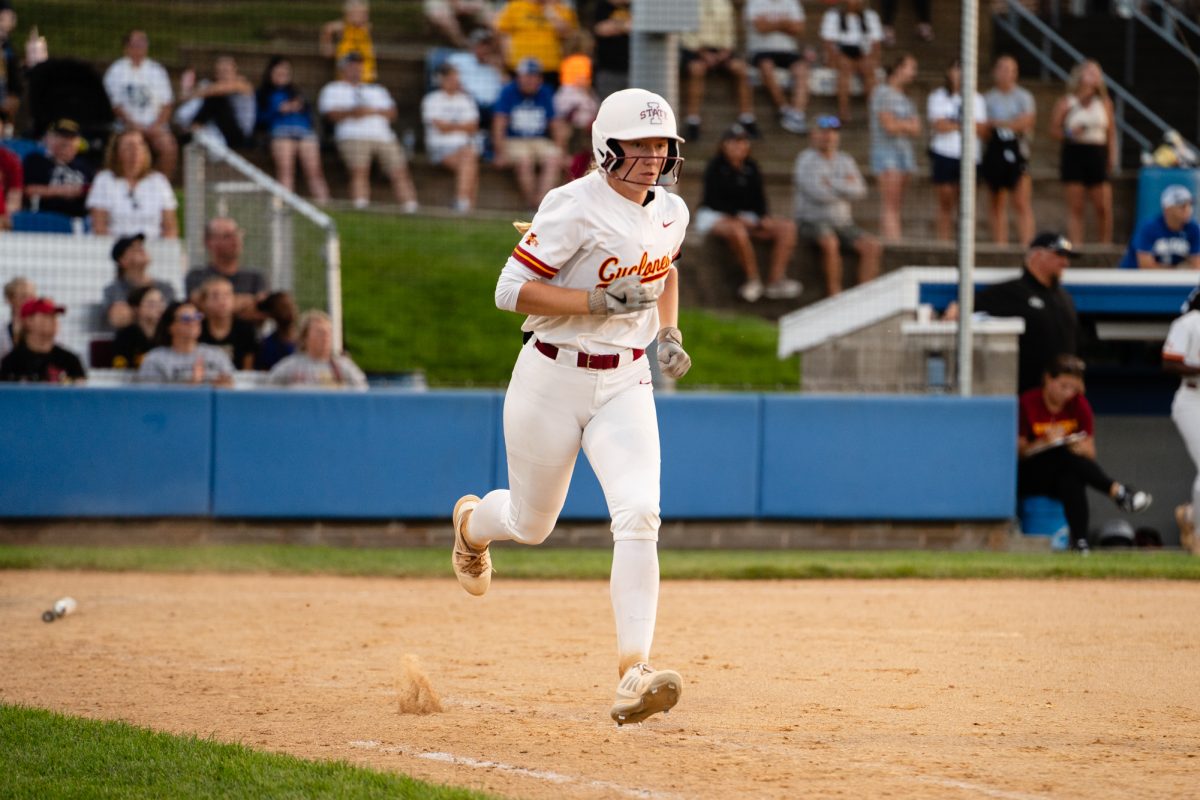Audrey Kennis: A change agent in the college of design
February 23, 2017
Audrey Kennis is a wife, mother, graduate of two universities in Iowa and now sits as multicultural liaison officer (MLO) for the College of Design.
Her daily experience includes receiving calls from students and faculty members looking for answer. There are also visits from colleagues and students. Kennis said that many of those visitors find themselves taking candy from her candy jar that sits adjacent to her door.
Kennis finds joy in what she does. She credits her early upbringing for directing her to her current position.
Early Life
Denver, Colorado is home for Kennis. It’s the place where Kennis said that she was introduced to diversity. Kennis said that diversity usually surprises many people that are not from Denver.
“[Denver is] more of a west coast demographic,” Kennis said.
She also added that many that live in Denver are not born there. Kennis remembered her childhood community of East Denver being a rich and vibrant community with diverse backgrounds and socioeconomic statuses.
“I was used to being around people of different racial backgrounds and religious backgrounds.” Kennis said.
Kennis attended the Denver School of Arts, an integrated performing arts high school in the urban part of Denver. Her focus at the institution was dance, a passion Kennis would not pursue following high school. However, her classwork encouraged her to see the world around her.
“I had a black dance teacher,” Kennis said. “That was unique at the time.”
Kennis’ father grew up during the Jim Crow era. Kennis said her father’s upbringing would lead their lives into race driven trajectory.
“Growing up I was very conscious of race.” Kennis said. “I remember teaching my little cousin about race at the age of four.”
Iowa, a new diverse setting and the college years
Kennis is unsure about why she chose to attend college in Iowa. Kennis began attending Clarke University in Dubuque, Iowa, for her undergraduate degree in 2003. Dubuque was a new experience for Kennis due to the town’s racial tension at the time. The town had been racially divided for years. During the 90s, there were instances of racial incidents, including cross burnings.
Kennis had no knowledge of the history of racial tension in the town. Clarke University reflected the surroundings of the campus in that there was racial division on campus between students.
“There were no talks about it, no intentional outreach, no conversations about how to deal with living there,” Kennis said.
Kennis joined Unity, a program that brought together black students from all three colleges in Dubuque.
“At times, [students of color] didn’t feel welcomed.” Kennis said. “We tried to convince businesses to sell black hair products because there were none.”
Unity created opportunities to have meetings to talk about race, but with the small amount of African American students in Dubuque, the program’s agenda was to ensure a space of solidarity and a feeling of community, for the students.
“[We] did a lot of programming to bring together the schools,” Kennis said.
Transition to Iowa State
Following her graduation from Clarke University, Kennis decided to stay in Iowa. She began to fall in the love with the state. Her husband, who she had met while in Dubuque, managed to find work in Iowa as well. Kennis decided to pursue a master’s degree in higher education. She selected Iowa State due to its notoriety for its master’s program for higher education. Kennis began working and studying at the university in 2010. She took a job in transfer admissions for three years, which helped complete her coursework in her master’s program.
Kennis didn’t consider herself a traditional graduate student due to the fact she also worked at the institution.
“I had to apply to classes that supported the way I worked, not learn things in the classes then go out and apply them,” Kennis said.
Prior to working and studying at Iowa State, Kennis spent time working at Hawkeye Community College in Waterloo, Iowa. She worked with underrepresented students attending the college and vividly remembered there being a small connection between black faculty. Once arriving at Iowa State, Kennis was told that there was a connection group for black faculty, but Kennis would later realize that no such connection existed.
Kennis struggled to connect with other black faculty at Iowa State. She credited Anita Collins, a longtime black faculty member for her continuous efforts to connect as many black faculty members that she could by creating newsletters, which Kennis stated was beneficial to her. After interviewing several black faculty members for a class assignment, Kennis realized she wasn’t alone and that others longed for a sense of community and togetherness.
“I needed something to keep me [at Iowa State],” Kennis said.
Kennis decided to write a proposal for support from the ISU administration in pursuit of an organization. The proposal would eventually become the Black Faculty and Staff Association (BFSA).
“We wanted a platform where we could connect and address issues that affect the marginalized and people of color,” Kennis said. “It enhanced my quality of life here at Iowa State. I could stay long term and be happy.”
The BFSA is still active today.
Becoming a MLO and the leaving a mark in the College of Design
From the time Kennis arrived at Iowa State, she knew that she wanted to be a multicultural liaison officer. From joining the sign language club at her high school to interacting with classmates that were considered different by her peers, Kennis had always expressed a connection to people, especially those that felt marginalized.
The College of Design was one of the first Iowa State colleges to put in place a multicultural liaison officer. When the opportunity opened, Kennis quickly applied to the position. She started her career as a MLO in fall 2013. She hoped to create a beneficial role to all students, especially underrepresented students.
“We’re able to see where all the gaps lie and be able to fill those gaps,” Kennis said.
Kennis created portfolio workshops to help students create professional portfolios to help them have a satisfying transition into their respective careers. Kennis also established the Hometown Design program in the College of Design.
Kennis started the program in 2014. The program allows students in the College of Design to return to their high schools and show those students different possibilities in the design profession. The program is currently suspended, but Kennis hopes to reboot it soon.
“[The program exposes] students to the opportunities of this world,” Kennis said.
Through the program, Kennis has had groups of prospective students come and explore the College of Design for a day. Kennis has seen participants return to attend Iowa State and declare a major in the College of Design.
Along with Hometown Design, Kennis established a mentoring program where first year students are paired with upperclassmen in the design majors. The mentors and mentees partake in group outings in efforts to build their relationships. From there, first year students explore all the majors before finally selecting which one they will pursue.
“It helps them to go to someone to ask questions that they are afraid to ask peers or in class,” Kennis said.
The mentoring programs have been beneficial to College of Design as a whole. Kennis says that those that are involved in the program are more likely to have higher placement rates.
These two programs aren’t the only programs Kennis finds herself invested in. She serves as faculty adviser for Diversity Student Council, which is a student council organization in the College of Design, established last spring following the Cy-Hawk football game incident in 2015.
Kennis hopes to create a place of solidarity for students in the College of Design. Kennis believes that people should be able to tell their stories.
“We have several students affected by the immigration ban,” Kennis said. “Real lives are affected.”
Kennis is starting to see that students find resources and benefits from MLOs and advisers. Kennis is currently trying to show white students how they can be change agents. Kennis sees diversity as something very important, inevitable and long-term.
“I hope to do training to get faculty and staff to become more culturally responsive,” Kennis said. “I want to be a good mother, good educator, to help the lives of others and use the talents God has given me.”
Kennis also has goals for students and the innovative College of Design itself.
“I hope the College of Design can be a place where students feel welcomed and included and can thrive in their career path.” Kennis said.
Kennis is optimistic about the university living up to their expectation of being a land grant institution. She looks forward to seeing students of all backgrounds grow into change agents and critical thinkers.
“I hope Iowa State becomes a place where everyone can live up to obtaining their goals,” Kennis said. “Also everyone use their education to improve the world.”







